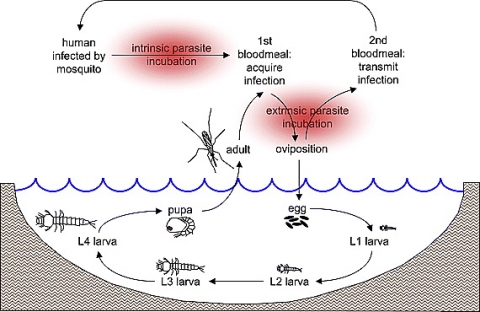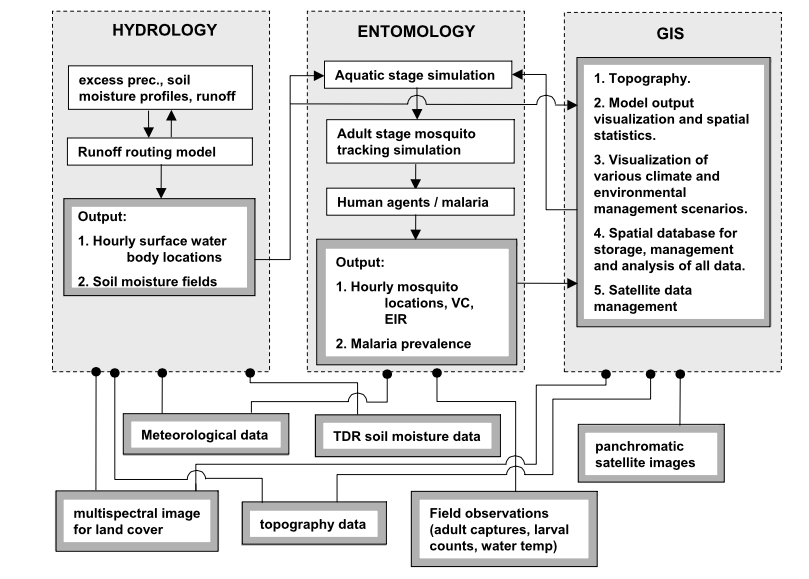Hydrology, Entomology, and Malaria Transmission Simulator (HYDREMATS) is a coupled hydrology and entomology model that has been developed to simulate the mechanistic links between environmental variables and malaria transmission with high temporal and spatial resolution (Bomblies et al. 2008). The hydrology model uses spatially distributed, satellite-derived vegetation and soil parameters. Excess precipitation is routed over this rough, infiltrating surface to simulate the formation and persistence of pools that allow malaria mosquito breeding. An agent-based entomology model simulating known behavior relevant to malaria transmission constitutes the link between hydrology and malaria. In this way, environmental determinants of malaria transmission are simulated in detail.
Schematic diagram of model setup, with the hydrology, entomology and GIS components. The various inputs into the different components are summarized at the bottom of the diagram (Figure 3 from (Bomblies et al., 2008).

Advancement of aquatic stages of mosquitoes, from egg, to multiple larval stages, to pupa, and finally adult emergence. The parasite enters the mosquito’s body at the first infected blood meal, which is uses to develop and deposit its first clutch of eggs. Parasite development continues with a degree-day dependence until the mosquito becomes infectious to humans. Transmission occurs when the infectious mosquito takes a second blood meal from a different human. Then the parasite’s intrinsic incubation period begins within the human body. A new mosquito takes a blood meal following the intrinsic incubation period and becomes infectious, to repeat the transmission cycle (Figure 4 from Bomblies et. al., 2009).
- Bomblies, A, Duchemin J-B, Eltahir EAB. 2009. A mechanistic approach for accurate simulation of village scale malaria transmission. MALARIA JOURNAL. 8 Abstract

